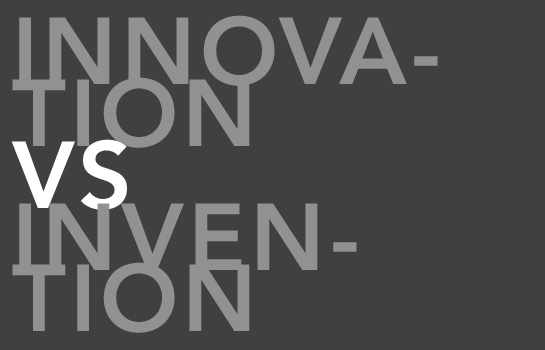innovation vs invention

The spark of this entry came from a post written by Tomi T Ahonen on the blog Communities Dominate Brands.
In his post, Ahonen blasts Forbes for an article titled, Nokia’s Motorola Moment. The crux of his argument is that Forbes has gotten gotten all the facts wrong, and that most of the innovations being credited to Apple and their iPhone were actually introduced by Nokia years before.
To Ahonen’s credit, the Forbes article does have holes, and there are generalizations that don’t hold up. That being said, I do agree with Forbes that Nokia isn’t bringing it’s A-game with regard to high-end smartphones. Like Motorola a few years ago, Nokia is being reactive to competitors, rather that being proactive and innovative.
Ahonen’s fallacious reasoning stems from his not accepting of this distinction that Professor Jan Fagerberg explained in his 2004 paper, Innovation: A Guide to the Literature:
Invention is the first occurrence of an idea for a new product or process. Innovation is the first commercialization of the idea.
In a tirade tinged with hostility, Ahonen provides example after example of Nokia being first to introduce various features on mobile devices – equating ‘being the first’ to ‘innovators’:
Forbes claims clearly that Nokia is lagging in innovation compared to Apple’s iPhone. Now, the current iPhone 3GS is yes, a very impressive smartphone. Lets look at a few of the innovations we witnessed in this newest model, one month ago? Compared with the iPhone 3G from a year ago, the “innovative” 3GS upgraded its camera to 3 megapixels. Nokia is clearly not as innovative, as Nokia’s first 3 megapixel cameraphone (and yes, smartphone) was released in 2006. The 3GS now added video recording ability to the camera feature of its phone. When did Nokia’s (smartphone) cameraphones all incorporate this “innovative” ability? in 2004. Apple now offers video recording at 30 frames per second at so-called DVD quality. First Nokia smartphone to have 30 fps DVD quality video recording came out in 2006. The 3GS added MMS picture messaging support in 2009. Nokia’s cameraphones have all been MMS compliant at least since 2003 (proabably 2002, I don’t remember exactly). Apple added Autofocus in 2009. Nokia had autofocus early in 2007.
What Ahonen is clearly not understanding is that more and better features do not mean innovation. Was Nokia the first to have many of the featured mentioned? Absolutely. Did they innovate within the mobile space with these features? No. They might have invented or pioneered with particular technologies, but they did not innovate.
Fagerberg explains this lag between invention and innovation:
Sometimes invention and innovation are closely linked, to the extent that it is hard to distinguish one from another …In many cases, however, there is a considerable time lag between the two. In fact a lag of several decades or more is not uncommon (Rogers 1995). Such lags reflect the different requirements for working out ideas and carrying them out in practice. First of all, while inventions may be carried out anywhere such as, for instance, in universities, innovations occur mostly in firms in the commercial sphere. To be able to turn an invention into an innovation a firm normally needs to combine several different types of knowledge, capabilities, skills and resources.
What Nokia is failing to provide is a unified Human Experience that brings together messaging, maps, email and web browsing and effortless application purchasing and downloading – something that marks Apple’s iPhone as a true innovation in mobile computing. The iPhone continues to lack certain features that some people consider necessities, but what is does do, it does so amazing well.
At this point in the history of technology, its pointless to compete on features alone. My universal remote for my cable TV has every button imaginable on it, but that doesn’t make it innovative. And conversely, just because Twitter has none of the features available on Facebook doesn’t make it any less of the innovation in communication it’s proving to be.
I won’t break down each place Ahonen misses the mark in his argument, but suffice to say he goes on and on with examples of Nokia having bigger screens first on their phones, being the first to have an mobile application store (Ovi), the size of Nokia’s app store being bigger and on and on with precedents made by Nokia. But let’s remember Fagerberg’s ‘lag’ quote from above. Invention doesn’t mean innovation.
And no matter how matter how many features a Nokia phone might have under the hood, they’re pointless without an easy and innovative way to access them.
UPDATE: I just remembered another ‘first’ for Nokia – gaming on mobile devices with their N-GAGE. Another example of pioneering, but not innovating. Once again, the innovation awards goes to Apple with their SDK, App Store and integrated accelerometer all wrapped up in an easy to use system.